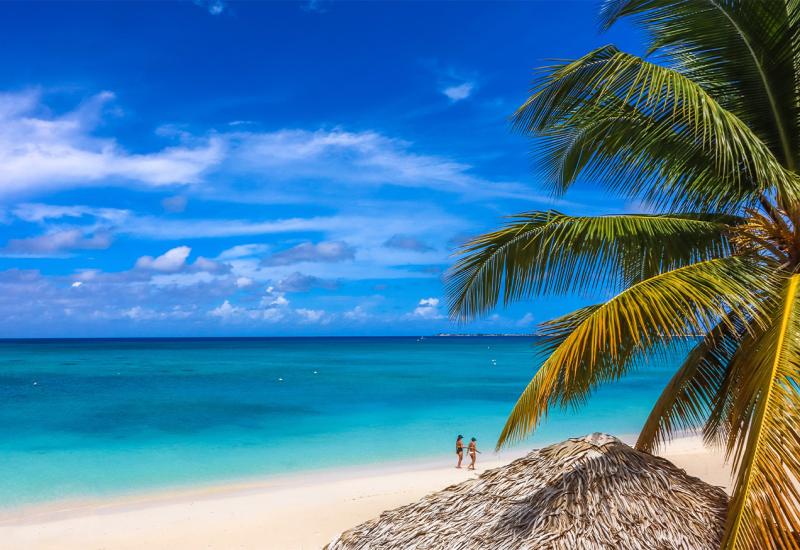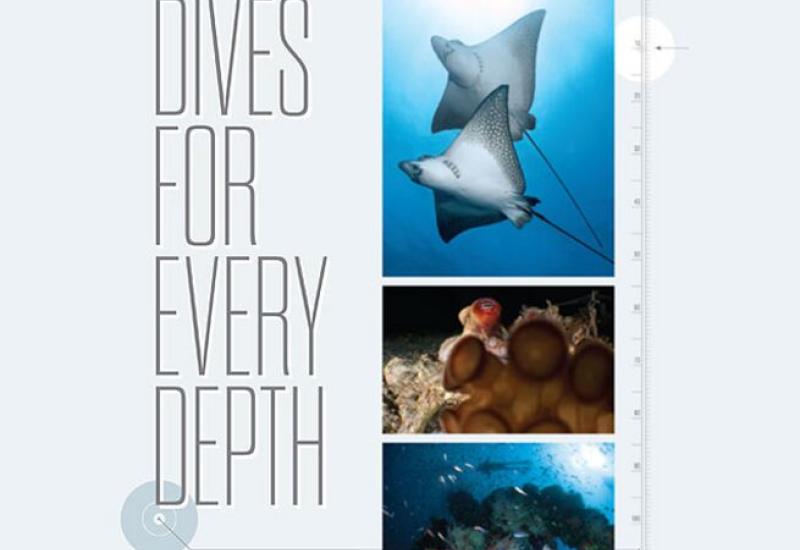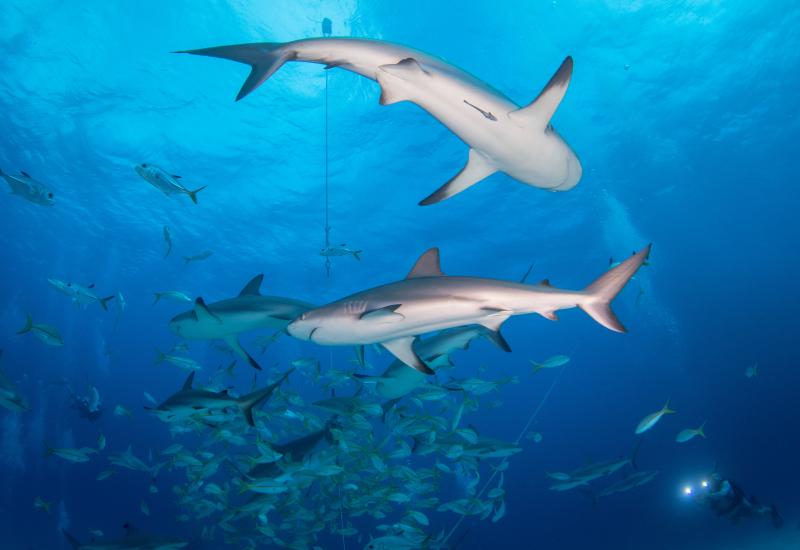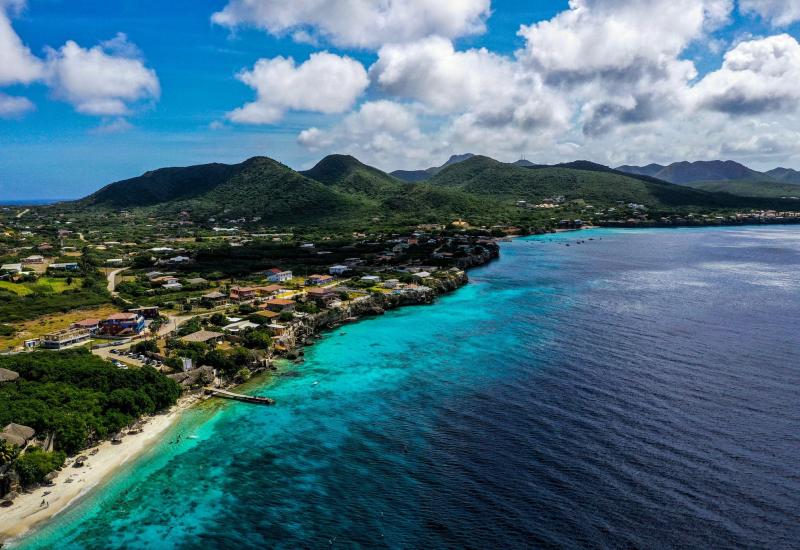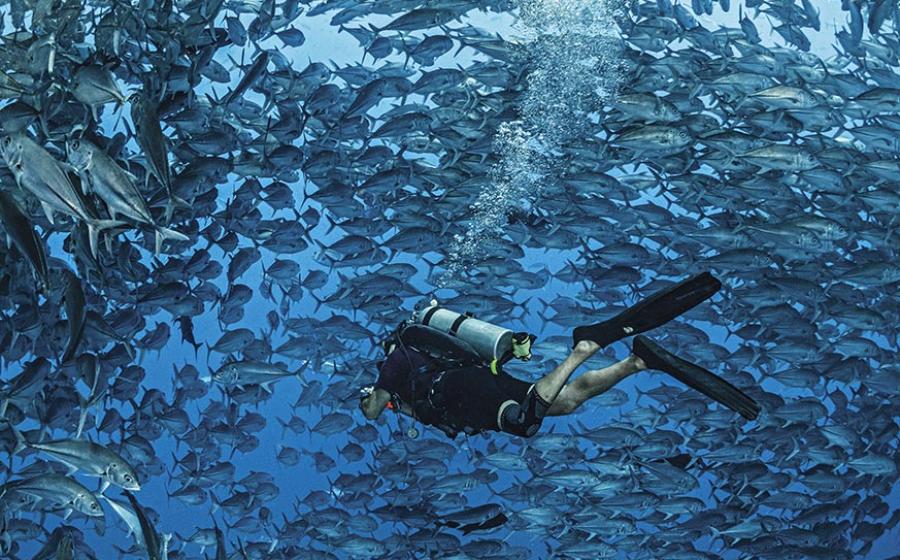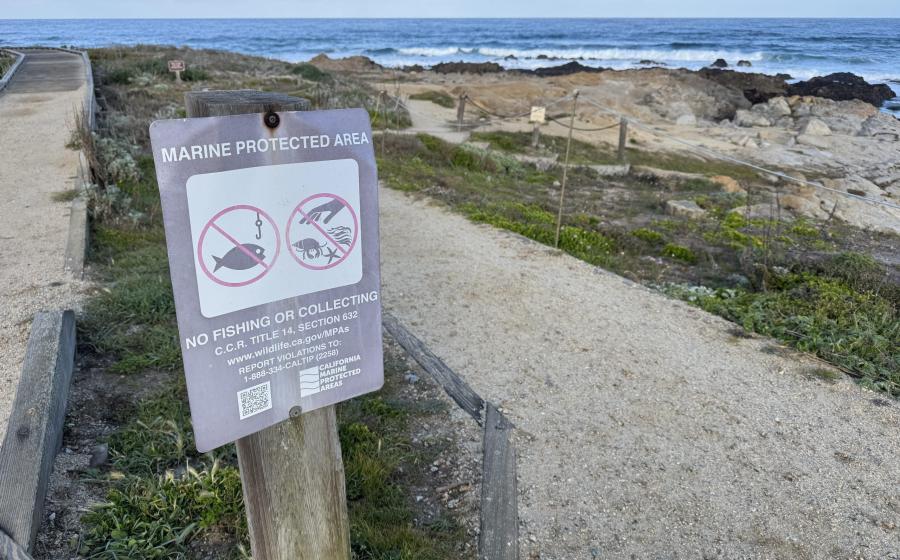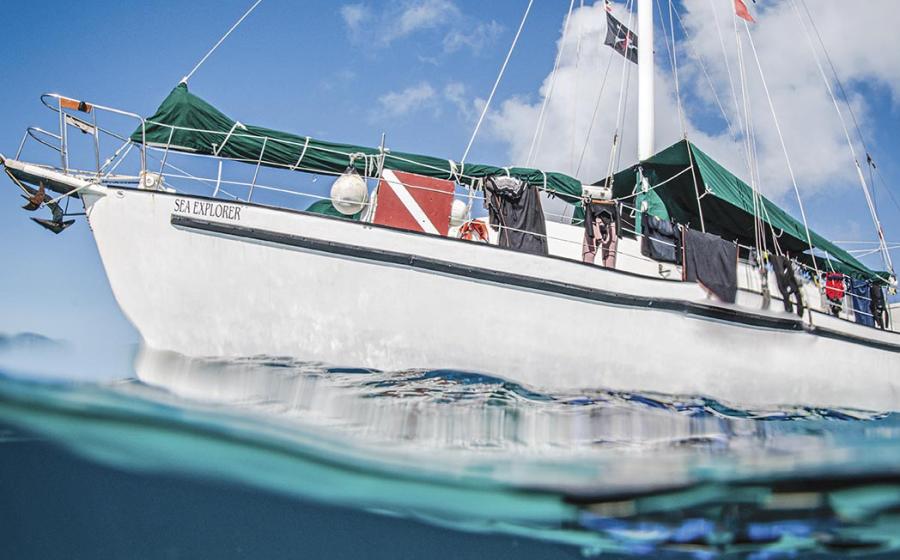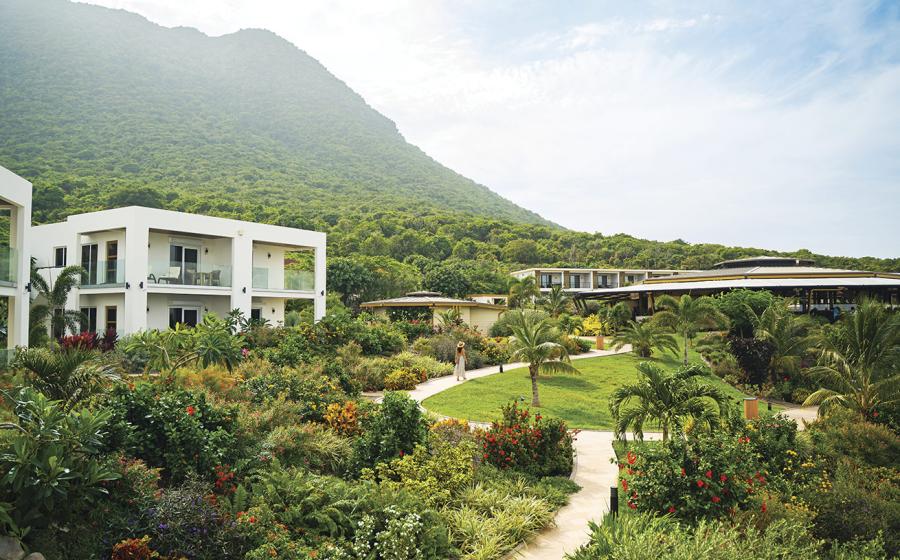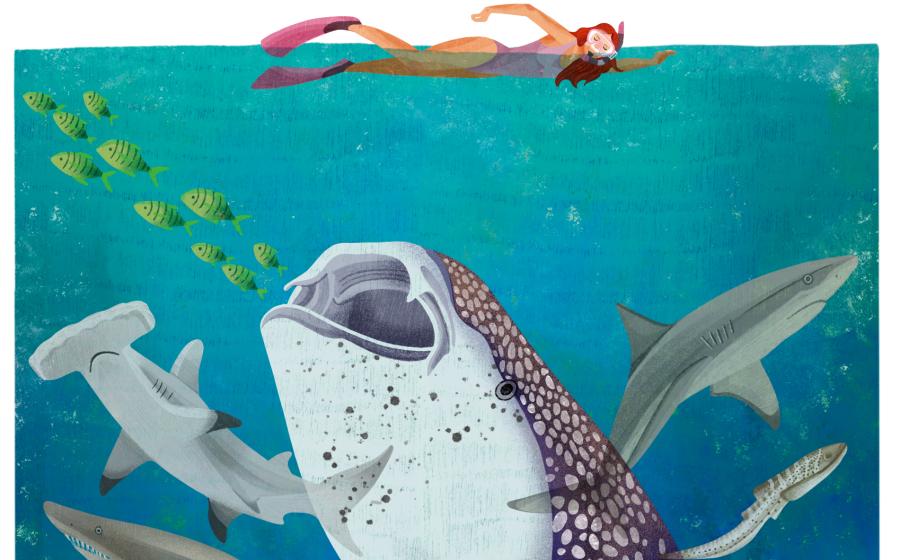Scuba Diver Profile: Gemma Smith

Dan WrightThe Diepolder caves are located at the Sand Hill Boy Scout Camp on Hwy 50 between Brookesville and Weeki Wachee Springs in Florida. You must be at least Abe Davis or Wakulla Award rated (at least 100 full cave dives in at least five different systems) in order to dive with a guide here.
After getting certified in scuba diving at the age of 17, PADI AmbassaDiver Gemma Smith is now a CCR cave instructor. We wanted to learn more about this remarkable role model.
MEET GEMMA
Age: 27
Hometown: Devizes, UK
Years Diving: 10 years
Highest Level of Certification: Hypoxic CCR trimix diver, and CCR Cave instructor
SPORT DIVER: You started diving at 17 — what inspired you to get certified?
GEMMA SMITH: I actually had a bit of a strange and meandering introduction into the world of scuba diving. Because of health issues, from the age of 13 I was educated at home by my parents. I had always been interested in ‘extreme’ sports, and being taught at home gave me the freedom and the time to pursue interests outside of the norm. I learned to skydive, fly planes, white-water raft, bungee jump, kayak, anything I could think of that was outdoors and fun. When I was 17 I saw a photo of a cave diver, and thought it looked cool. I decided to give scuba diving a go. Unlike all the other sports which I’d tried and had fun at, but then quickly moved on from, I never moved on from diving. It gripped me in a way no other sport ever had. It became my whole world.
SD: What made you concentrate on technical and rebreather diving?
GS: All my initial training was in the UK, it's not always easy conditions. However, around the UK coastline are some truly incredible WWI and WWII shipwrecks, but many of them are slightly deeper than would be sensible for just a single tank. Growing up with two parents as archaeologists I’ve always had a fascination with history and the past. I was just determined to dive those wrecks, so I decided I needed to learn technical diving to be able to do that safely, and by doing that my diving world just opened up. Suddenly there were all these dives I could do that before hadn't been possible for me. The more I got involved with technical diving the more I enjoyed the challenge of it, and the opportunities it gave me. I trained as high as possible on open circuit, and then when I started looking at my gas bills for 100m/330ft dives I soon realized that actually at this point a rebreather would be a better option for me!
“You only get one life. Go out there and live it.”
SD: Tell us about the Antikythera shipwreck project.
GS: Diving the Antikythera Shipwreck has been without doubt one of the highlights of my journey in diving. It's just such an iconic site! Discovered by sponge divers in the early 1900s, then dived by the legend Jacques Cousteau on two separate expeditions in the '50s and '70s, its position was lost and nothing was done on the site for many years. Then, in 2012 a marine archeologist from Woods Hole Oceanographic Institution in Massachusetts was granted permission by the Greek government to once again start excavations on the wreck. Alongside other Greek archeologists from the Greek Ephorate of Antiquities, a joint project was undertaken to set about finding out what other secrets this wreck site may be hiding. By using the very latest technology in the form of closed circuit rebreathers, we have been able to have trained underwater archaeologists excavating on the site for the first time in its history. Considering the site is at 60m, this is by no means a straightforward task. My work on the site is as a rebreather instructor, and involves monitoring not only my own life support system, but also working as a ‘guardian angel’. This means that I am in charge of looking after and working closely alongside my designated archeologist, allowing them to focus on the job of excavating. As a buddy pair, we each bring our own expertise to the job. This system has worked brilliantly over the last few years — to allow the scientists to work effectively, and most of all safely, on the wreck. Last year was our most successful season yet, with the finding of many bronze elements, including a whole bronze arm that does not fit to any known statue previously taken from the wreck. So there is definitely more down there to find!
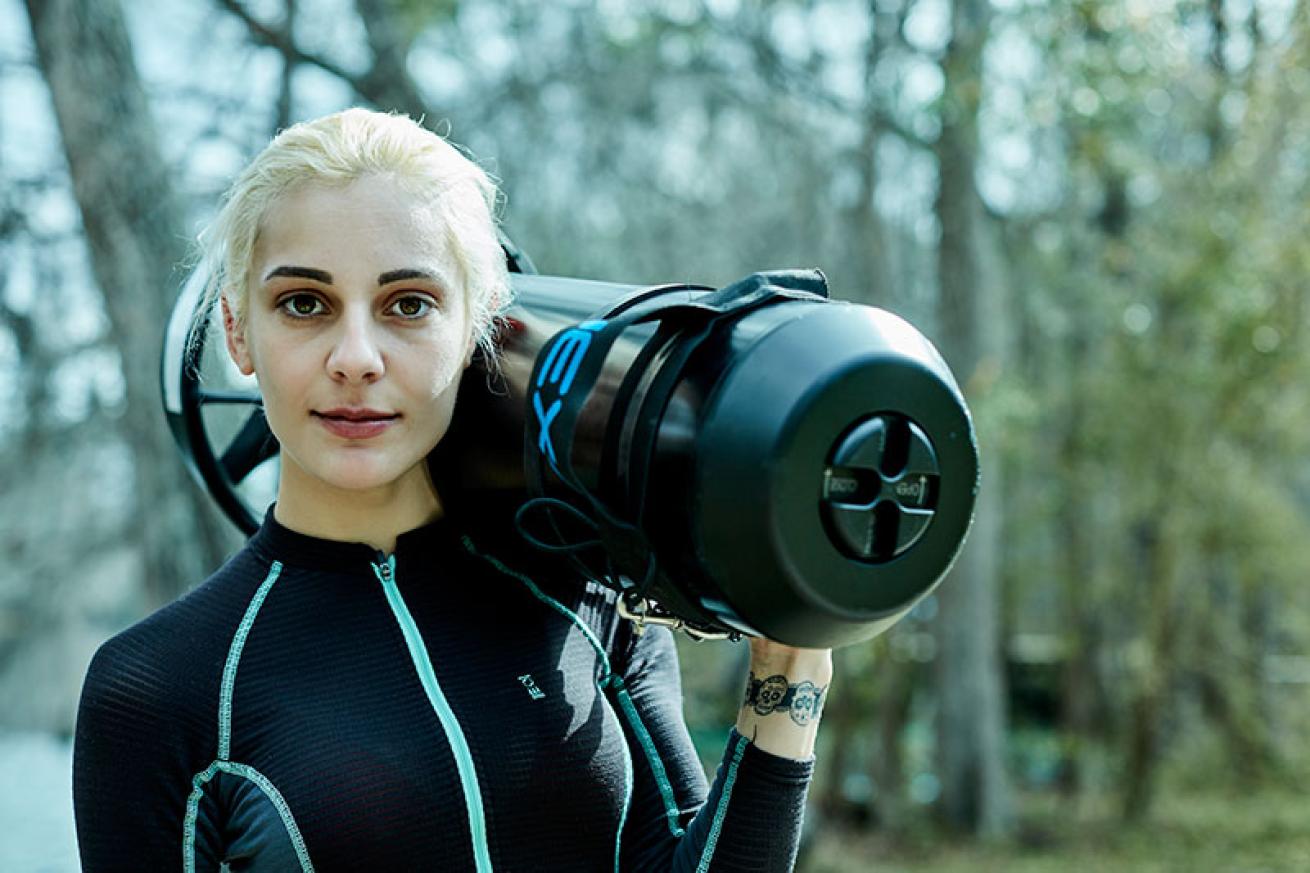
Courtesy Gemma SmithGemma used a scooter to explore the cave system at Florida's Ginnie Springs.
SD: What is the most challenging dive you’ve made as a technical diver?
GS: A few years ago when I was living in Grand Cayman, my dive partner Phil and I were approached by Nauticam to do the deepest-ever real-world test on one of their new housings. This involved taking a camera and housing down to 155m/500ft and seeing how the controls worked at depth. Phil was in charge of checking the camera, and I was in charge of running the dive. From a logistical point of view it's a huge undertaking. We had a boat, designated in-water safety support, more gas than we could ever possibly want. This was all done on CCR of course, but we still had to have sufficient open circuit gas that could be used if we had any issues. It does make you think, though, when you watch the minutes of deco turning to many hours for just a few minutes spent at the bottom. The fact that the housing worked and we actually got useable images was just a massive bonus.
SD: Who do you admire as a diver and why?
GS: Oh, too many people to count! We are so lucky to have so many incredible role models in this sport, especially when we look at the early years; Lottie Haas, Zale Parry, Valerie Taylor, Mossy Powell … I don’t think I would be diving today if it weren't for these trailblazing women.
SD: What would you tell young girls who are thinking about getting certified?
GS: Just do it! Yes, sometimes the equipment is heavy and perhaps there are not as many women diving as I would like there to be, but diving will enrich your life in ways you probably never thought possible. The sport of diving always reminds me of a huge tree: there is the main trunk from which everything else grows, but there are also hundreds of branches reaching out in all directions, eager to be independent and different. This is exactly how diving is! From the main interest we all have in our underwater world, there are a never-ending variety of new branches to go off and explore, and something new to learn, enthuse, or inspire everyone. I don’t think it is possible for anyone to ever be bored as a diver, and in the 10 years I have spent working full-time in the diving industry I have found this to be true. Diving has the ability to give to people whatever that person needs at that time in their life.
SD: What’s next for you?
GS: I am off to Lithuania in March to search for previously un-dived wrecks. The Baltic in March is going to be brutally cold, but the wrecks there are so beautifully preserved it will be worth it (at least that’s what I’m telling myself!).

